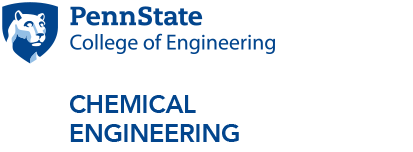
An artificial analogue of the water channel protein, aquaporin, was shown to have permeabilities approaching that of aquaporins and carbon nanotubes. They also arrange in tight two dimensional arrays. Image: Karl Decker/University of Illinois at Urbana-Champaign, and Yuexiao Shen/Penn State
Self-assembling, biomimetic membranes may aid water filtration
8/03/2015
A synthetic membrane that self assembles and is easily produced may lead to better gas separation, water purification, drug delivery and DNA recognition, according to an international team of researchers.
This biomimetic membrane is composed of lipids -- fat molecules -- and protein-appended molecules that form water channels that transfer water at the rate of natural membranes, and self-assembles into 2-dimensional structures with parallel channels.
"Nature does things very efficiently and transport proteins are amazing machines present in biological membranes," said Manish Kumar, assistant professor of chemical engineering, Penn State. "They have functions that are hard to replicate in synthetic systems."
The researchers developed a second-generation synthetic water channel that improves on earlier attempts to mimic aquaporins – natural water channel proteins -- by being more stable and easier to manufacture. The peptide-appended pillar[5]arenes (PAP) are also more easily produced and aligned than carbon nanotubes, another material under investigation for membrane separation. Kumar and co-authors report their development in a recent issue of the Proceedings of the National Academy of Science.
"We were surprised to see transport rates approaching the 'holy grail' number of a billion water molecules per channel per second," said Kumar. "We also found that these artificial channels like to associate with each other in a membrane to make 2-dimensional arrays with a very high pore density."
The researchers consider that the PAP membranes are an order of magnitude better than the first-generation artificial water channels reported to date. The propensity for these channels to automatically form densely packed arrays leads to a variety of engineering applications.
"The most obvious use of these channels is perhaps to make highly efficient water purification membranes," said Kumar.
Other researchers on this project include Yue-xiao Shen, Mustafa Erbakan and Patrick Saboe, graduate students in chemical engineering; Peter Butler, professor of biomedical engineering; Sheereen Majd, assistant professor of biomedical engineering and You Jung Kang, graduate student in bioengineering, all at Penn State.
Also participating were Aleksei Aksimentiev, associate professor of physics and Karl Decker, graduate student, University of Illinois at Urbana-Champaign; JunLi Hou and Wen Si, Fundan University, Shanghai, China; Thomas Walz, professor of cell biology and Rita de Zorzi, postdoctoral fellow, Harvard Medical School.
The National Science Foundation, the U.S. Army Corps of Engineers, an Extreme Science and Engineering Discovery Allocation and the Blue Waters petascale supercomputer system at University of Illinois supported parts of this research.



